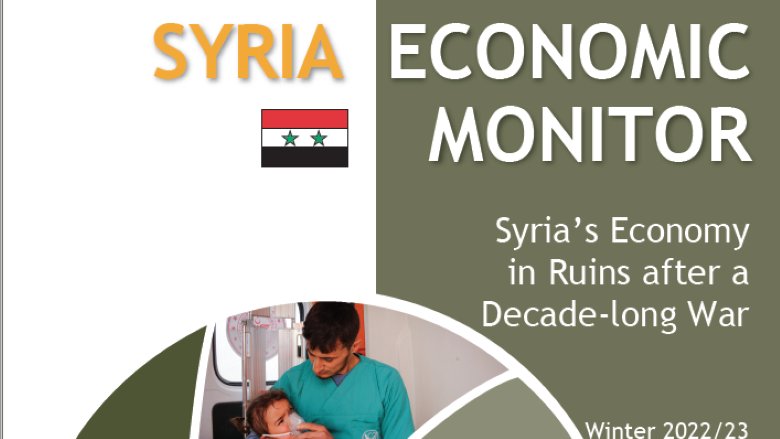The Syria Economic Monitor is a semi-annual economic publication of the World Bank. It aims to provide an update on key economic developments, outlook, risks, and policies in Syria and situate them in the conflict context. It also presents findings from the World Bank’s recent analytical work in Syria. The Syria Economic Monitor is part of a more general effort at the World Bank to better understand economic and social dynamics in fragile, conflict, and violence (FCV) settings.
This Syria Economic Monitor was written prior to the February 6, 2023 earthquake that affected Turkey and Syria. The preliminary macroeconomic impact of this earthquake is analyzed in the World Bank publication, “Syria Earthquake 2023 Rapid Damage and Needs Assessment (RDNA)”.
Although large-scale armed conflict has subsided, Syria continues to rank among the top countries in terms of violent deaths. Multiple domestic and external shocks are adversely affecting the economy.
Macroeconomic conditions have substantially deteriorated since the start of the war on Ukraine. With nearly half of oil consumption about one-third of cereal consumption imported, higher commodity prices, triggered by the Ukraine war, have weakened the fiscal and external positions, and are fueling inflation. With higher costs of essential goods, fiscal policy has become more restrictive. Already very high, the vulnerability of Syrian households is on the rise. Increased household vulnerability went hand in hand with an increase in labor force participation, especially for workers at the margins of the labor market with relatively limited earning opportunities, which includes women, youth, and the elderly.
Subject to high uncertainty, real GDP is projected to contract by 3.2 percent in 2023, following a 3.5 percent decline in 2022. Conflict, high input costs, and water scarcity are projected to limit crop production. In addition, fuel shortages are expected to further weaken manufacturing and disrupt transportation and services. Inflation is projected to decline but remain high in 2023, due to exchange rate pass-through, persistent food and fuel shortages, and further cuts to subsidies. Risks to the growth outlook are significant and tilted to the downside. Recurring climate shocks may severely affect crops and agricultural livelihoods. A prolonged war on Ukraine could push up commodity prices even higher, negatively affecting Syria’s position as a food and energy importer. Inadequate health facilities could exacerbate the impact of rapidly spreading contagious diseases.
The Special Focus section of the Syria Economic Monitor presents main findings from World Bank-EU 2022 Syria Joint Damage Assessment (DA) of Selected Cities in Syria. The Damage Assessment, relying heavily on remote-based analysis, provides information on the impact of ongoing conflict in Syria on the population, physical infrastructure, and quality of service delivery in targeted cities. The Damage Assessment shows that, as of January 2022, total damages across the assessed 14 cities and 11 sectors (physical infrastructure, social, and crosscutting) range between $8.7 billion to $11.4 billion.


